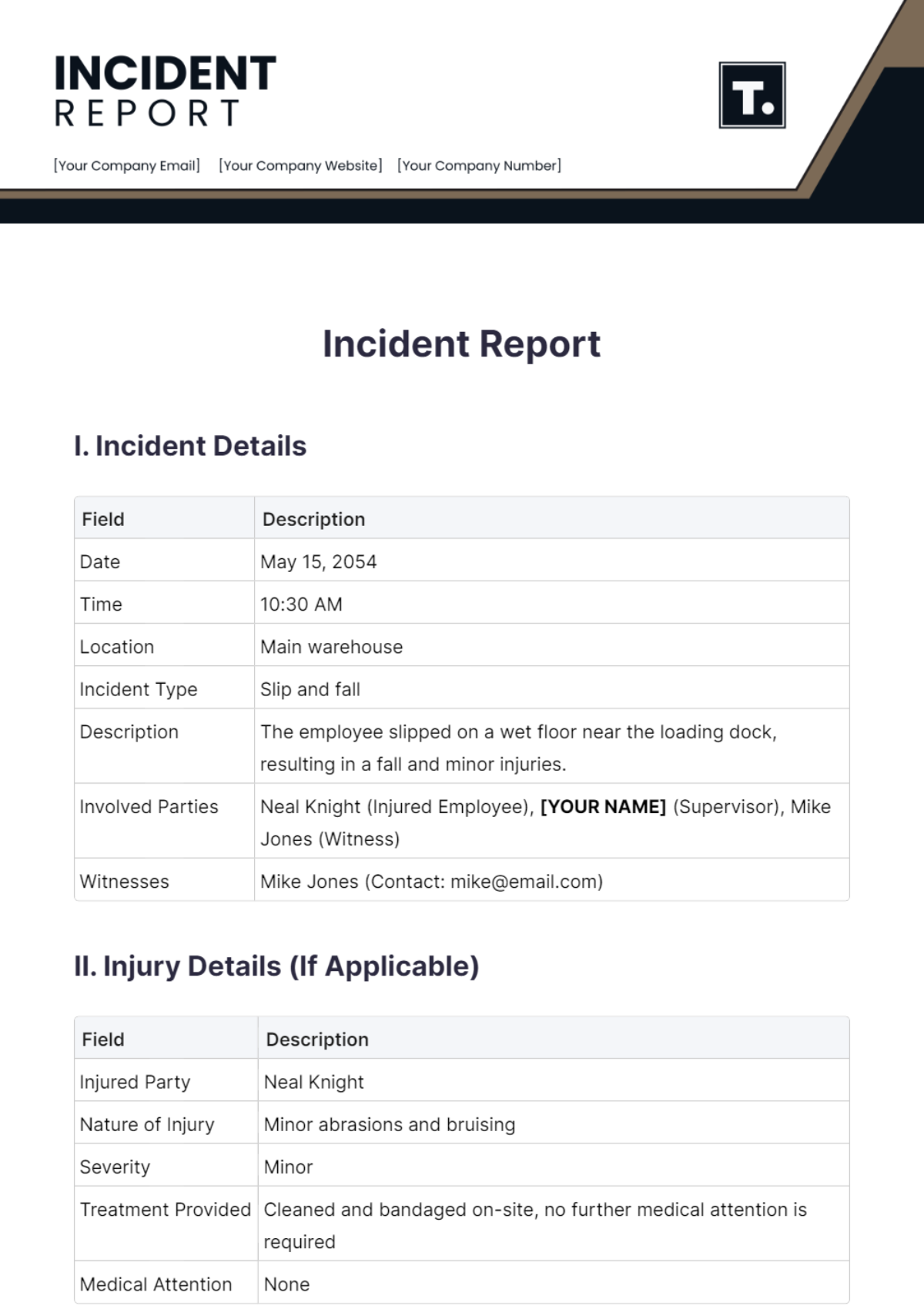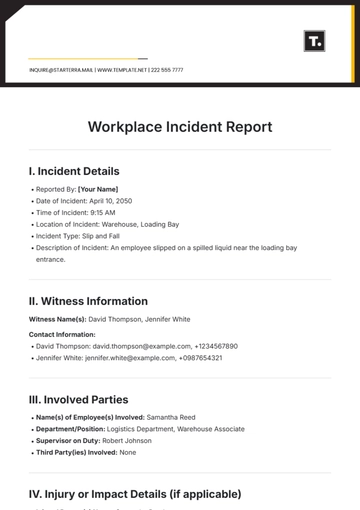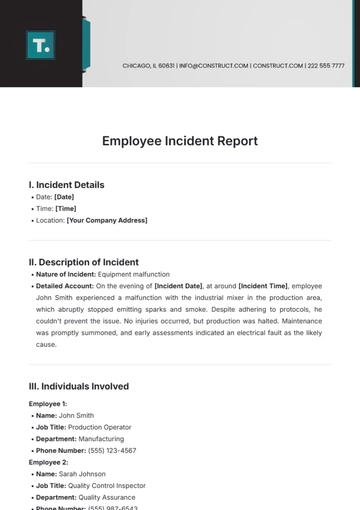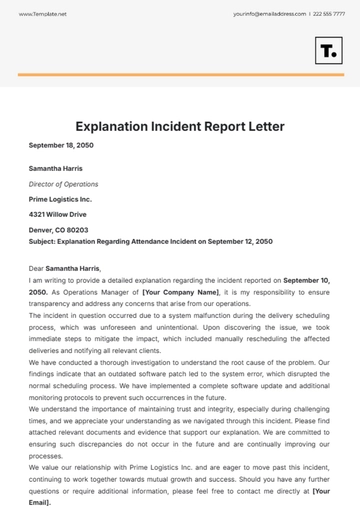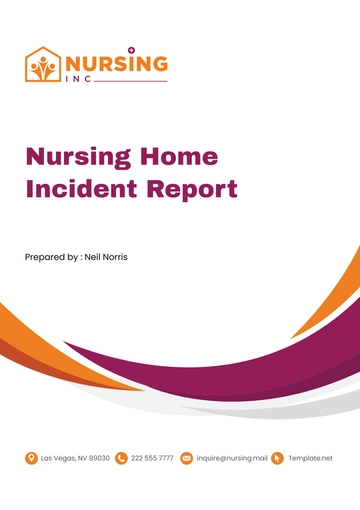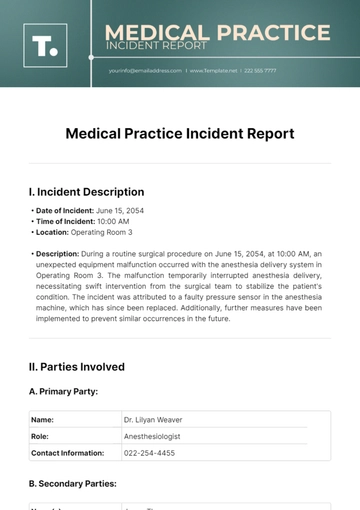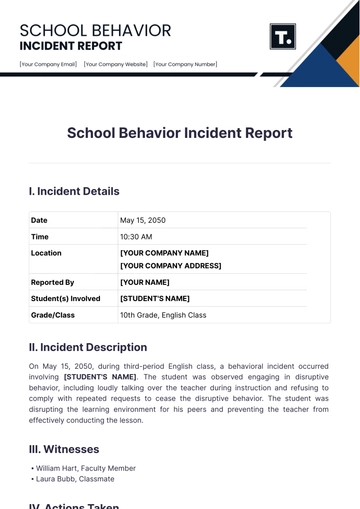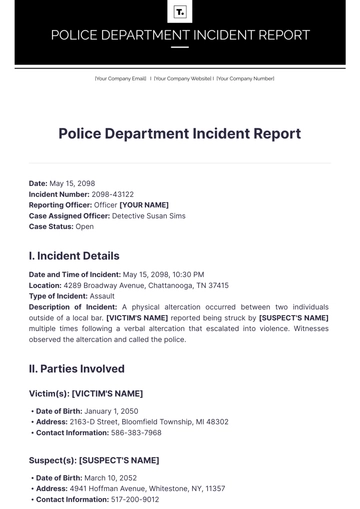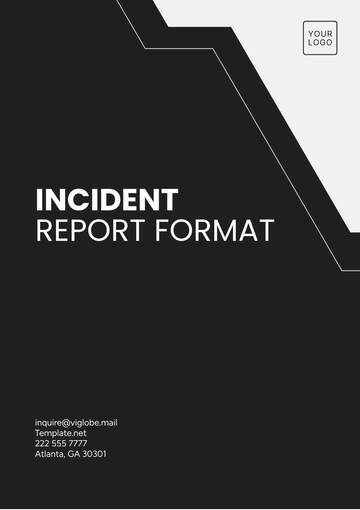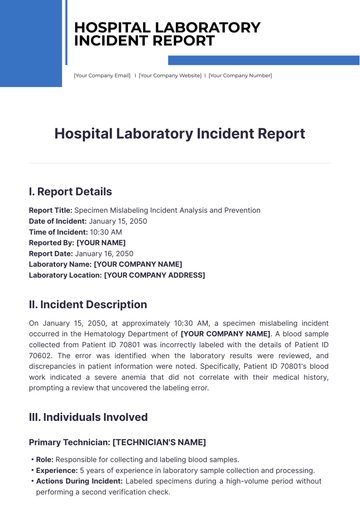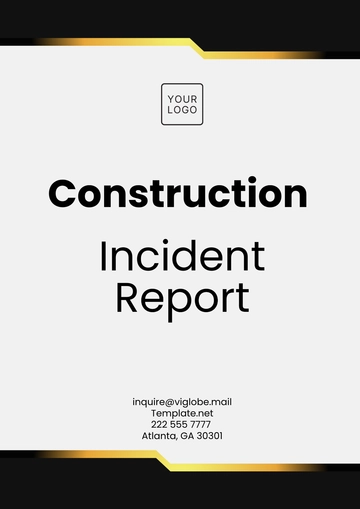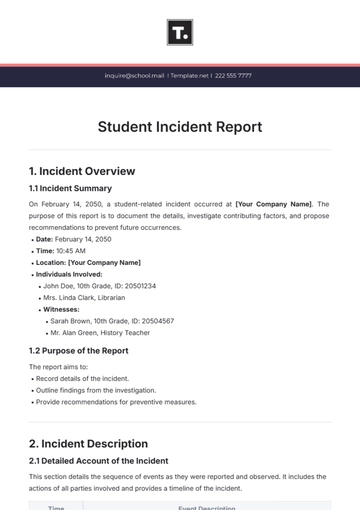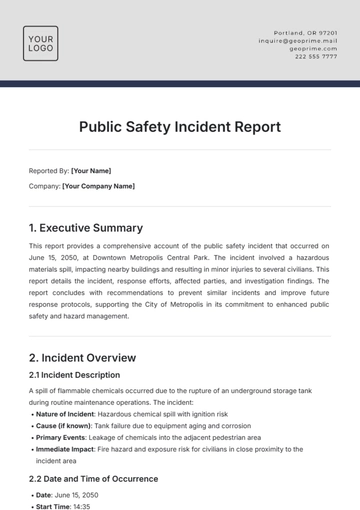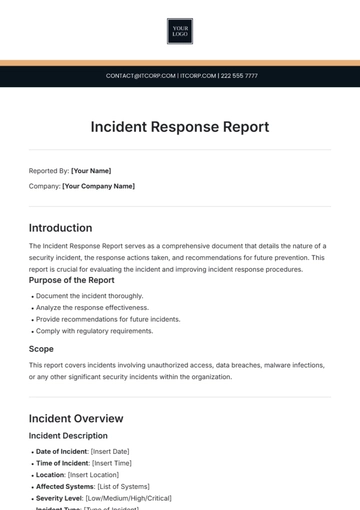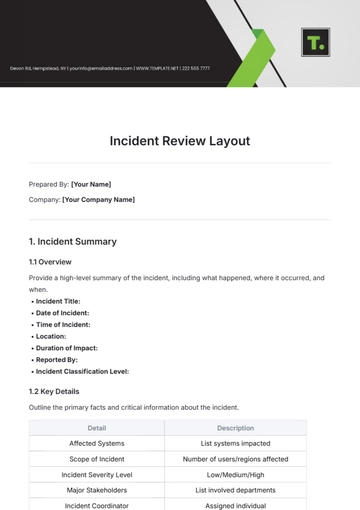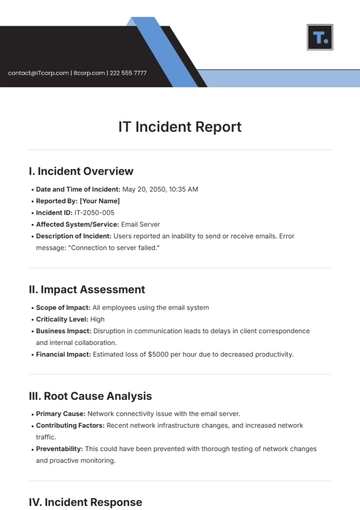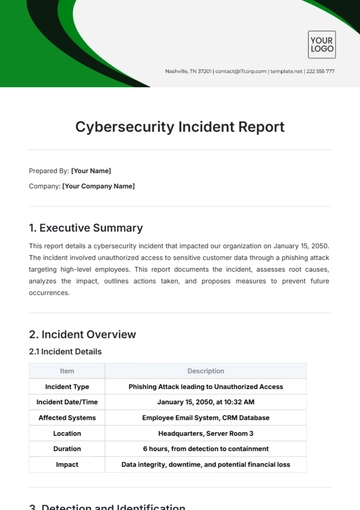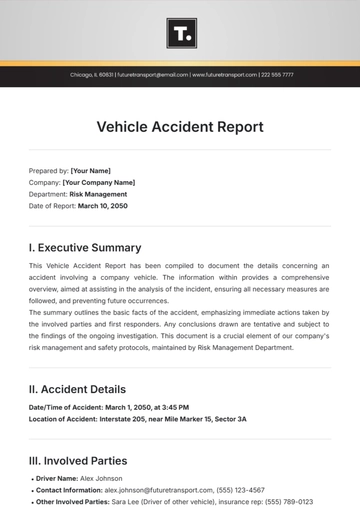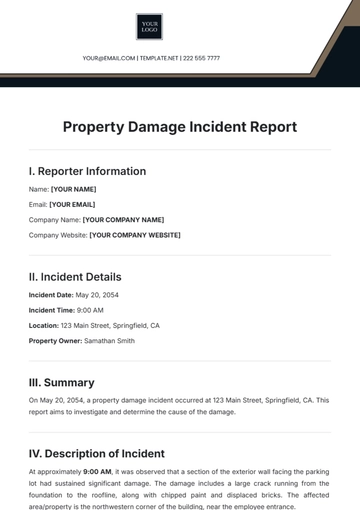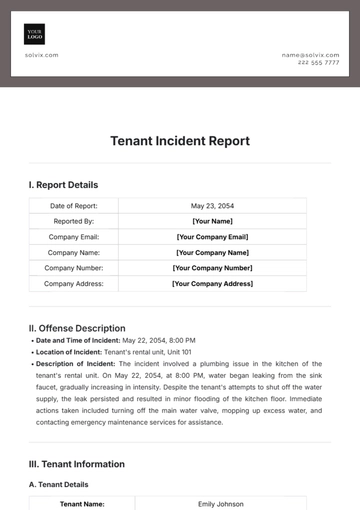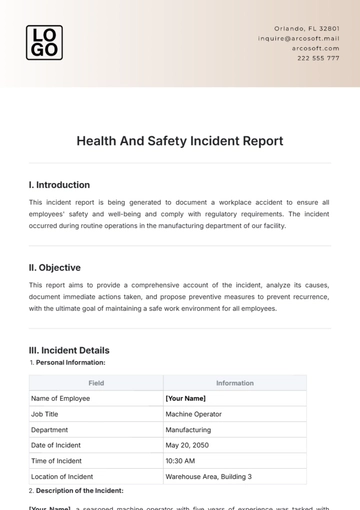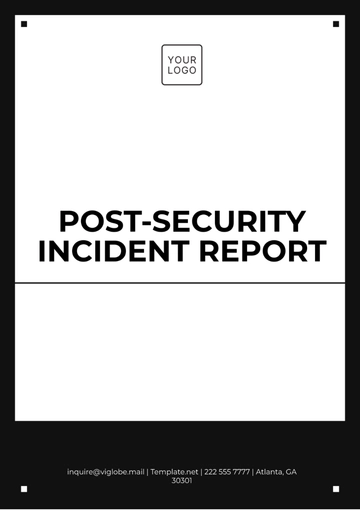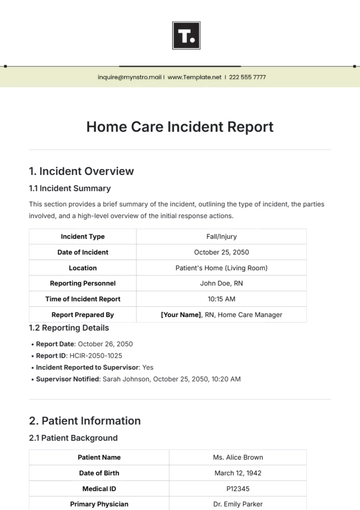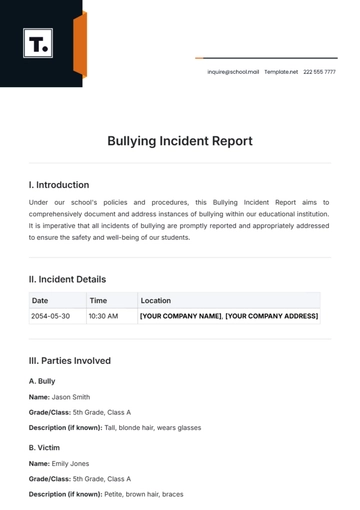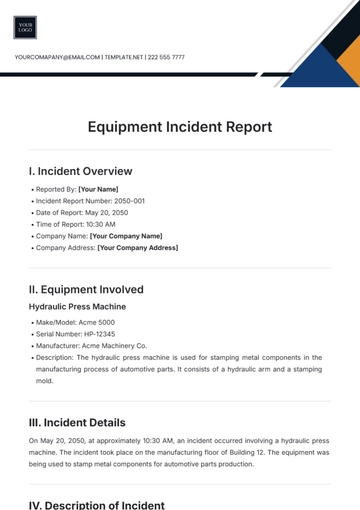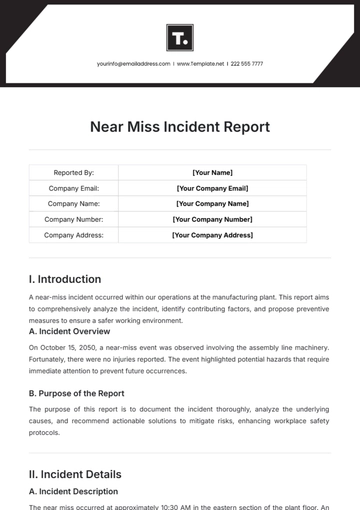Incident Report
I. Incident Details
Field | Description |
|---|
Date | May 15, 2054 |
Time | 10:30 AM |
Location | Main warehouse |
Incident Type | Slip and fall |
Description | The employee slipped on a wet floor near the loading dock, resulting in a fall and minor injuries. |
Involved Parties | Neal Knight (Injured Employee), [YOUR NAME] (Supervisor), Mike Jones (Witness) |
Witnesses | Mike Jones (Contact: mike@email.com) |
II. Injury Details (If Applicable)
Field | Description |
|---|
Injured Party | Neal Knight |
Nature of Injury | Minor abrasions and bruising |
Severity | Minor |
Treatment Provided | Cleaned and bandaged on-site, no further medical attention is required |
Medical Attention | None |
III. Actions Taken
Action Taken | Description |
|---|
Immediate Response | The employee was assisted to a safe area and the area was cordoned off for cleaning. |
Investigation | The supervisor interviewed the employee, reviewed CCTV footage, and inspected the area for hazards. |
Corrective Measures | Wet floor signs were placed and a reminder email was sent to all employees about safety procedures. |
Follow-up | Scheduled additional training on workplace safety for all warehouse staff. |
IV. Recommendations
Recommendation | Description |
|---|
Safety Improvements | Consider installing anti-slip mats in high-risk areas and increase the frequency of floor inspections. |
Training Needs | Conduct regular safety training sessions focusing on slip and fall prevention. |
Policy Review | Review and update the company's safety policies regarding floor maintenance and signage. |
V. Witness Statements (If Applicable)
Witness Name | Contact Information | Statement |
|---|
Mike Jones | mike@email.com | "I saw Neal slip on the wet floor near the loading dock. It had just been cleaned, but there were no warning signs." |
VI. Supervisor's Approval
I, [YOUR NAME], hereby approve this workplace incident report and confirm that the information provided is accurate to the best of my knowledge.

[YOUR NAME]
Company Supervisor, [YOUR COMPANY NAME]
Date: [DATE SIGNED]
Report Templates @ Template.net
